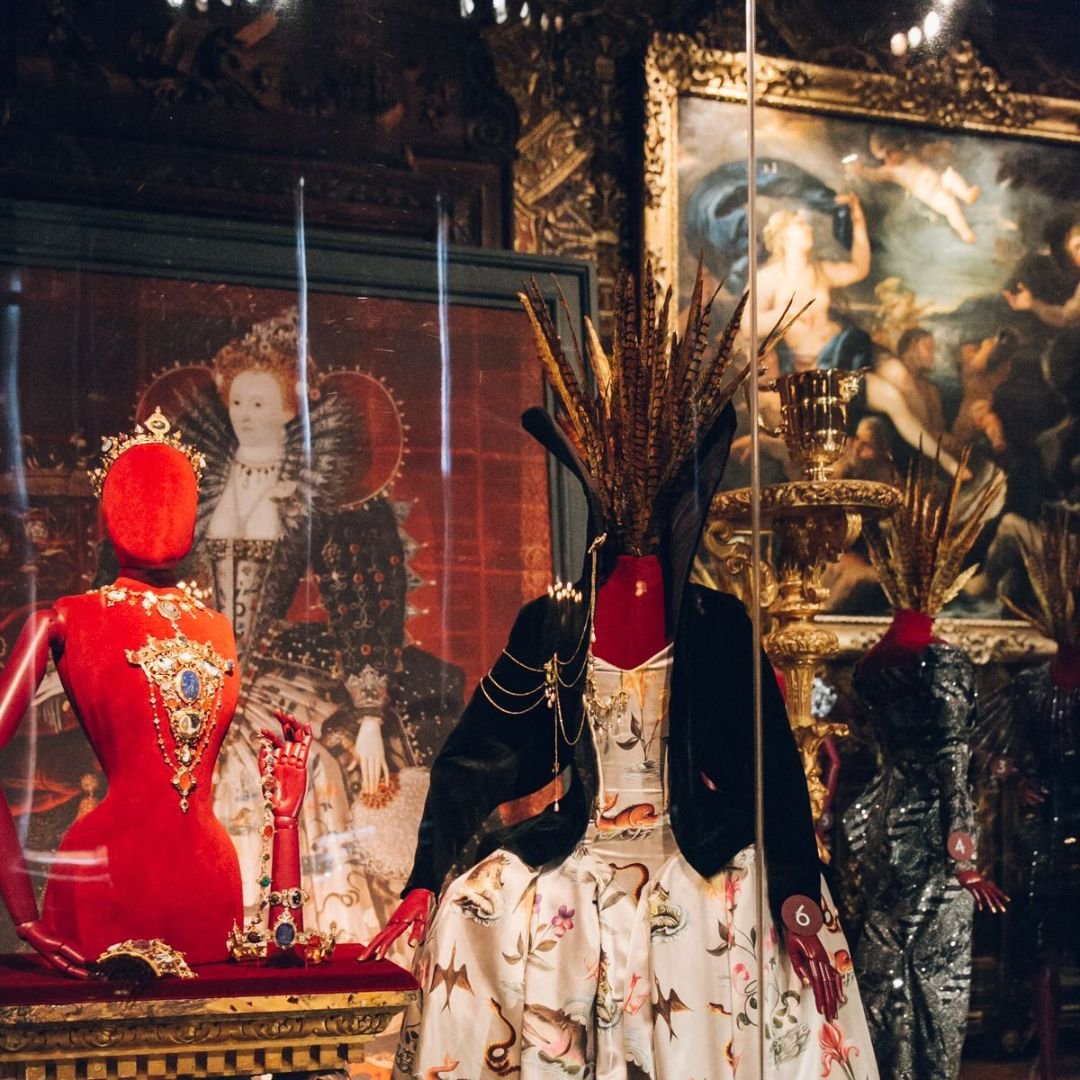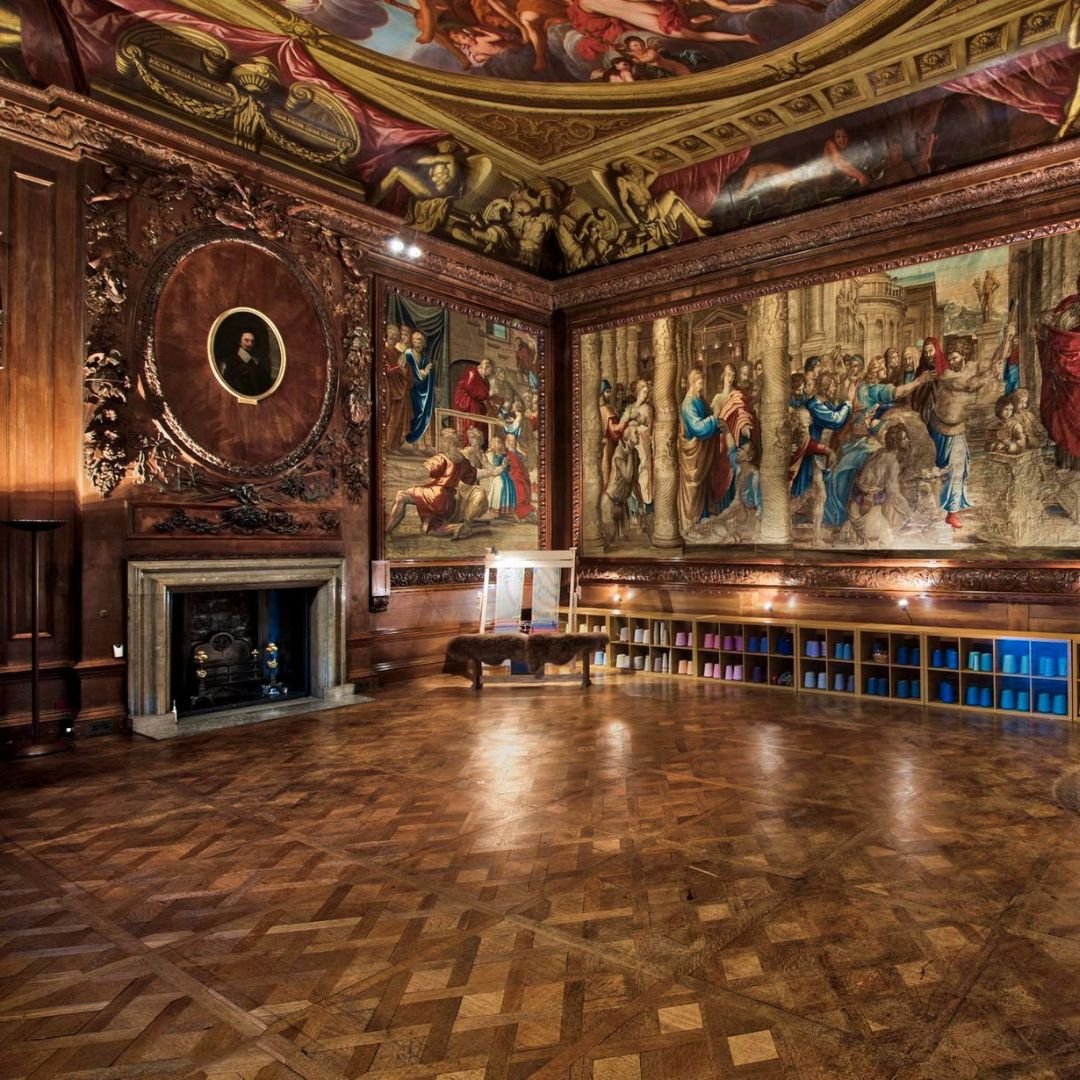Chatsworth House, Derbyshire: Britain's Favourite Country House
Chatsworth House is renowned for the quality of its art, the interior is breathtaking.
Today, Chatsworth contains works of art that span 4,000 years, from ancient Roman and Egyptian sculpture, and masterpieces by Rembrandt, Reynolds and Veronese.
There are more than 25 beautiful rooms to explore, from the magnificent Painted Hall, regal State Rooms, restored Sketch Galleries and beautiful Sculpture Gallery.
It also features one of Europe's most significant art collections.
Chosen several times as Britain's favourite country house, it is a Grade I listed property from the 17th century, altered in the 18th and 19th centuries.
Chatsworth is home to the Devonshire family, and has been passed down through 16 generations.
The house is well adapted to allow the family to live privately in their apartments, while the house is open to the public.
A look around the grand house reveals a selection of fine sights and puzzling curiosities.
These include four royal thrones, a sculpture gallery, paintings by the likes of Rembrandt and Van Dyck and the memorable illusionist painting of a violin hanging on a door.
It is estimated that more than a million people use the estate in some way every year making Chatsworth House one of Derbyshire’s most popular tourist attractions.
Chatsworth House started with a powerful woman, Bess of Hardwick, who was second only to Queen Elizabeth I in wealth and influence during her 16th Century lifetime.
The estate of Chatsworth was bought by her second husband, Sir William Cavendish, in 1549, from the Agard family.
Together with her second husband, Sir William Cavendish, Bess of Hardwick built the first house at Chatsworth, a building which would later imprison Mary Queen of Scots.
The building was completed by Bess of Hardwick, after Sir William’s death in 1557.
During the English Civil War, both sides occupied and damaged the family home and the then Earl of Devonshire did not return to Derbyshire until after the restoration of the monarchy.
The three storey Elizabethan house was completely remodelled by 1707 by the 4th Earl of Cavendish, who was made the first Duke after helping William of Orange ascend to the throne in 1689.
He had to restore much of the building and radically altered Chatsworth House at the turn of the 18th Century, creating most of the current imposing building.
During the Second World War, the home housed the girls’ boarding school and saw the State Drawing room turned into a dormitory.
The house was reverted to its original appearance when the girls moved out in March 1946.
However now, nearly 70 years later, part of the estate has been transformed back to how it looked when it was used by the school.
Rooms have been reverted back to dormitories, old school uniforms have been hung on mannequins and memorabilia including books from the war and never-before-seen paintings have been put on display.
It is part of an exhibition which has been opened to mark the centenary of the First World War and the 75th anniversary of the Second World War.
Outside, the beautiful gardens attracts around 300,000 visitors a year - it has a complex blend of features from six different centuries, covering 105 acres!
It is surrounded by a wall 1.75 miles long and sits on the eastern side of the valley of the Derwent River.
The woods on the moors to the east of the valley form a backdrop to the garden, where a staff of some 20 full-time gardeners maintain it.
The house and garden were first constructed by Sir William Cavendish and Bess of Hardwick in 1555.
The Elizabethan garden was much smaller than the garden today.
The main visual remnant of the time is a squat stone tower known as Queen Mary's Bower on account of a legend that Mary, Queen of Scots was allowed to take the air there while a prisoner at Chatsworth. The bower is now outside the garden wall in the park.
Some of the retaining walls of the West Garden also date from this era, but they were reconstructed and extended later.
Furthermore, on site, there’s also holiday cottages and hotels, shops and restaurants, including Britain's best farm shop.
Chatsworth House has around 10,000 reviews on TripAdvisor, with the majority being really positive.
One recent visitor said: “A must visit! An absolute stunner. Audio guide is essential inside the house. The rooms you are able to tour are gorgeous.
”The gardens are magnificent. You could spend hours here and do multiple visits. I wish I lived closer.”
Another person added: “Spectacular, magical and enchanting. The house was very thoughtfully decorated and the record-breaking display of Christmas brooches blew me away I could have looked at them for hours.
”We have been to Chatsworth many times as we live locally and this Christmas was one of their best, the previous Nutcracker was also up there.
”The lights in the garden were lovely, not like Dunham much smaller, but a nice addition to which I hope they invest more in next year.”
Check out some more interior photo of the beautiful displays below:
If you’d like to visit for yourself, tickets can be purchased via their official website, adult tickets are around £34 and includes access to the gardens,
The address is: Chatsworth House, Bakewell DE45 1PP.
If you enjoyed this blog post, please follow Exploring GB on Facebook for daily travel content and inspiration.
Don’t forget to check out our latest blog post below!
Thank you for visiting Exploring GB.























